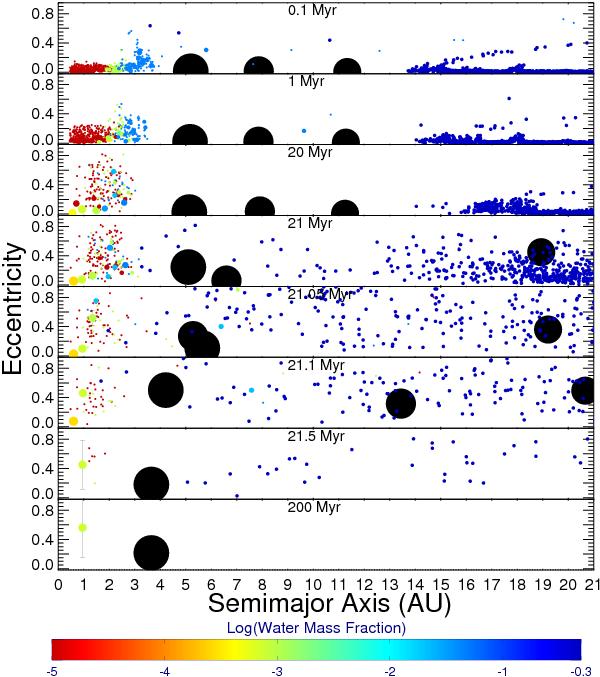Fig. 2

Evolution of a system with a relatively late (21 Myr) instability among the giant planets. Each panel shows a snapshot in time of orbital eccentricity vs. semi-major axis for all particles; vertical bars denote sin(i) for terrestrial bodies with Mp > 0.2 M⊕ and i > 10°. The particle size is proportional to the mass1/3, but giant planets (large black circles) are not on this scale. Colors denote water content, assuming a Solar System-like initial distribution (Raymond et al. 2004). The surviving terrestrial planet has a mass of 0.72 M⊕, a stable orbit within the habitable zone (semimajor axis of 0.96 AU), and a high eccentricity and inclination (and large oscillations in these quantities). A movie of this simulation is available in the electronic edition of the Journal.
Current usage metrics show cumulative count of Article Views (full-text article views including HTML views, PDF and ePub downloads, according to the available data) and Abstracts Views on Vision4Press platform.
Data correspond to usage on the plateform after 2015. The current usage metrics is available 48-96 hours after online publication and is updated daily on week days.
Initial download of the metrics may take a while.


